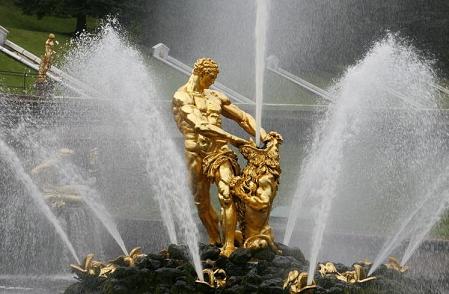|
WELCOME
CONFERENCE TOPICS
PROGRAM COMMITTEE
ABSTRACT SUBMISSION
IMPORTANT DATES
REGISTRATION FEES
REGISTRATION and PAYMENT of REGISTRATION FEE
VISA SUPPORT
ACCOMODATION
NEW SITE
PROGRAM NEW!
EXCURSION |
Scientific topics
Sections available:
1. Satellite sounding of atmosphere and surface. (Satellite passive and active sounding of parameters of the atmosphere and underlying surface (atmospheric temperature and humidity, trace gases, aerosols, clouds, surface emissivity and temperature, characteristics of wind field, etc.), physics-mathematical foundation, interpretation methods and algorithms, fast models of the direct problem, numerical analysis of retrieval errors, results and analysis of satellite sounding, validation of remote measurements, extant and projected experiments)
2. Remote sensing of atmosphere and underlying surface in different spectral ranges. (Ground-based, aircraft and balloon sounding, passive and active methods, physics-mathematical basis, methods and algorithms for interpreting measurements, numerical analysis of the information content and accuracy of remote measurements, results and perspectives in different spectral ranges, synergetic methods)
3. Radiative transfer theory. (Atmosperic molecular spectroscopy (experimental and theoretical studies of spectra of atmospheric gases, validation of databases, molecular absorption and radiation in the atmosphere), transfer of solar and
atmospheric radiation, transfer of polarized and non-LTE radiation, radiative transfer in
3-D media, etc.)
4. Radiation-cloud and radiation-aerosol interactions. (Characteristics of the interaction of radiation with aerosols and clouds: calculation methods and experiment, on-site and laboratory studies. Microphysical and optical characteristics of aerosols and clouds of different phase compositions: dependence of cloud optical characteristics on parameters of microphysical structure and cloud temperature, methods for accounting the influence of particle forms on cloud optical characteristics. Optical diagnostics of atmospheric aerosol and cloudiness. Satellite information on cloud mycrophysical characteristics and its application. Aerosol radiation forcing)
5. Radiative climatology and algorithms in models for weather and climate forecasting. (Radiative regime of underlying surface and atmosphere. Earth radiation budget - measurements and modeling. Radiative algorithms and validation. Spatial and temporal variations of solar radiation in different spectral ranges from data of ground-based and satellite measurements)
6. Field studies of radiative characteristics of atmosphere and surface. (Instrumentation for
measuring the atmospheric radiation characteristics and remote sensing of the atmosphere and underlying
surface, results of compex investigation projects)
7. Wave characteristics, macrocirculation and dynamics interactions in atmospheres of the Earth and other planets. (Observations and numerical modeling of the macrocirculation of middle and upper atmosphere; measurements of characteristics and structure of global waves and waves from local sources; modeling of generation,
propagation and interaction of atmospheric waves; wave action on the atmospheric macrocirculation and turbulence;
dependence of atmospheric wave movement from other dynamics processes in atmosphere, hydrosphere, firm ground and
space influence; dynamics interaction of different atmospheric layers)
8. Structure of middle and upper atmosphere of the Earth and other planets. (Observations of vertical distributions of temperature,
pressure, density and their different variations in the stratosphere, mesosphere and thermosphere; analysis and models of the radiative budget
and its components for these atmospheric layers; observations of neutral gaseous and aerosol structures and their different variations
in the stratosphere, mesosphere and thermosphere; modeling of gaseous and aerosol composition in these atmospheric
layers; connection of the structure and conposition of these layers with dynamics processes in the atmosphere, hydrosphere, firm ground
and space processes (at Sun etc.))
9. Photochemistry and kinetics of excited states of atoms and molecules and non-LTE radiation in the atmosphere of the Earth and other
planets. (Observations and modeling of non-LTE radiation in middle and upper atmosphere in UV, visible, IR and microwave
ranges; photochemistry and kinetics of excited states of neutral atoms and molecules, dependence of excitation degree on processes in
atmosphere, its temperature and composition and on external sources; application of non-LTE radiation observations
for studying the atmospheric structure, composition and different dynamics processes in atmosphere)
10. Radiation and dynamics of polar atmosphere. (Features of spatial-temporal variability of radiation balance in the Polar Regions. Results of measurements and modeling of long-wave and short-wave radiation fluxes variability due to natural and anthropogenic factors. Long-term trends of gas and aerosol composition of the polar atmosphere. Formation and development of polar stratospheric clouds; heterogeneous processes on its surface. The main factors of formation ozone content and UV irradiance anomalies, and the possibility of forecasting ozone mini-holes and UV illumination. Factors, determining the stability of the circumpolar vortex. Features of the thermal regime of polar atmosphere. The main physical processes determining variability of the composition and structure of polar stratosphere in the Northern and Southern Hemispheres.)
|
